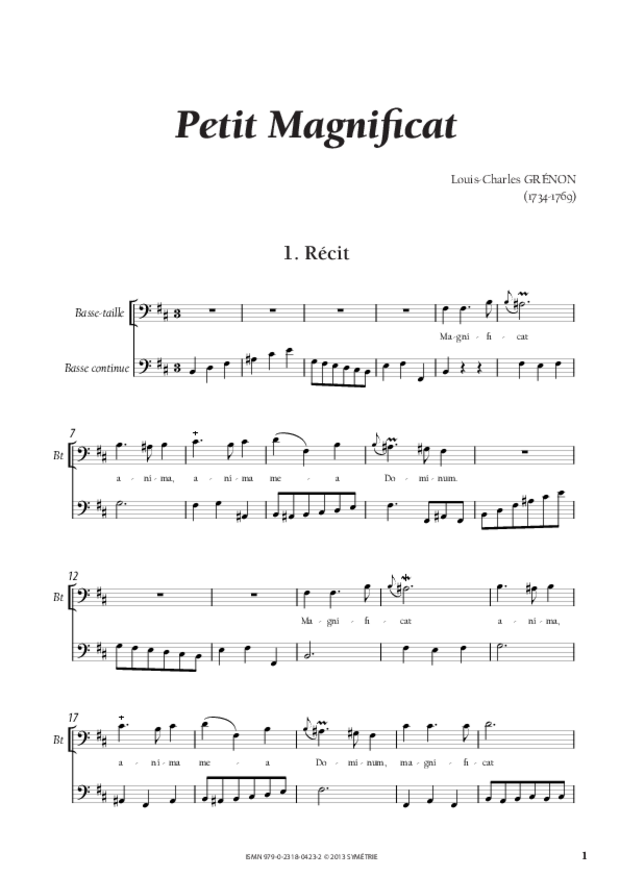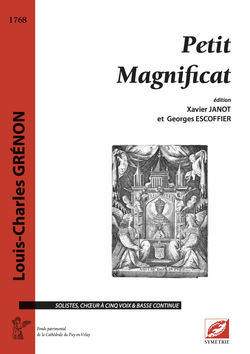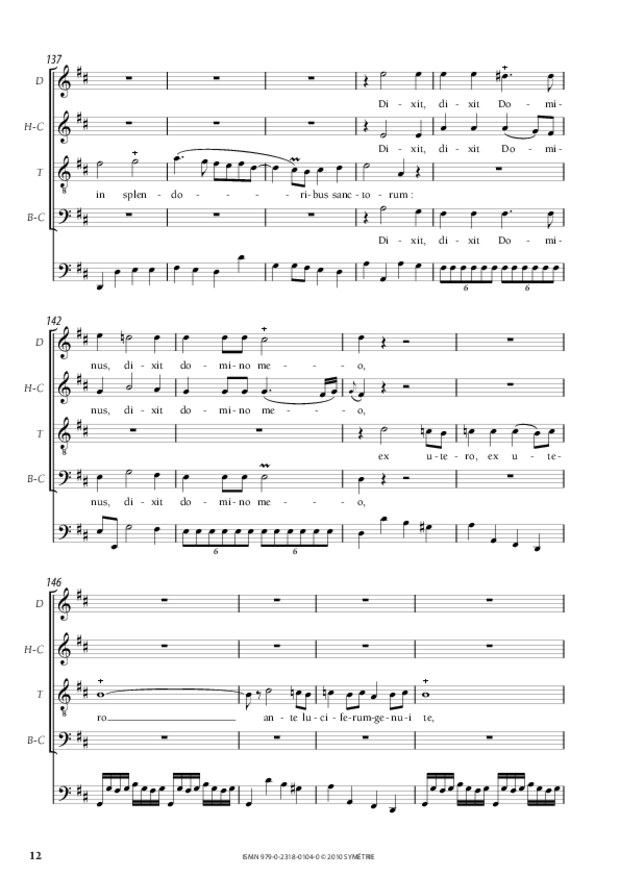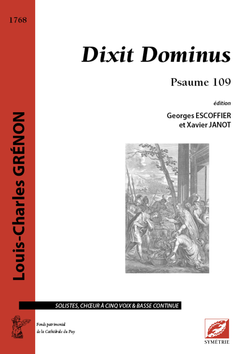Incomplete parish books in Saintes do not permit to establish Louis Grénon’s date of birth; still, we know he was born in the Saint-Vivien parish of this town and was christened Louis, Charles. By crosscheking one may assert nearly with certainty he was born in 1734.
Thanks certainly to his early spotted vocal gifts, he became a member of the children choir at the Saintes cathedral and then received a general and musical education given by the chapter choir schools. Thus he entered very young the circles of the musicians hired by the cathedrals, that he would not leave until his death.
In 1754, Louis Grénon was hired as music master by the chapter of the cathedral of Le Puy-en-Velay. Documents are missing to confirm that at this time, he was still attached to the cathedral of Saintes, no longer as a choir boy of course, but as a singer or an instrumentist, or even as the assistant of the music master. Still this hypothesis is likely to be true, for in order to be called to this position, one had to have a more solid education than the one received by a choir boy, especially notions of composition. Chapters would often keep their best former pupils after their voices had changed. They would go on working for them singing during the masses and for the music. Thus they would have a regular income, while having the possibility to improve their arts, and maybe expecting higher and more profitable positions. Many would join the clergy, like Louis Grénon, who was already tonsured when he had left Saintes.
We know nothing about how the chapter of the cathedral of Le Puy-en-Velay learnt about his abilities and why it had decided to give this 20-year-old man the huge responsibility of his music. There was seemingly not even a recruiting competition, as it was customary, and the conditions of his welcome would show that he was dearly wanted there: the probatory period preceding the signature of his contract was of only one month. The tasks given to him were those traditionally ensured by music masters: education and training of the choir boys, responsability of the solennity of the cult by the management of the singers and musicians. Obviously, the chapter relied on him to take the choir school in firm hand, after several years of wavering authority.
Grénon was highy praised during the next years, which shows he perfectly met the expectations. At the same time, he was registered at the seminary and was made a priest in 1761, using part of his inheritance to constitute his clerical title. Maybe because his new status made him too demanding about his wages, his relationships with the canons quickly got bad. In May 1763, he left the cathedral of Le Puy-en-Velay for Clermont’s, with which he had already been in contact for some years. We don’t know if he had written a lot during his stay in Le Puy; only 4 pieces remain, precisely dated from this period, during which he also tried instrumental music and published six symphonies today lost.
During his stay in Clermont, Grénon composed a lot according to the chronology of the pieces still available today: hymns, motets, a “Christmas Mass”. The second semester of 1763, just after his arrival, was particularly fruitful. Although the contract signed in 1765 was valid for three years, Louis Grénon quickly left Clermont to Saintes, either at the end of the same year, or in the course of the next one. His stay in Clermont only lasted a little more than three years.
In Saintes, Louis Grénon was back at the cathedral where he had been taught, this time as a music master. In addition to his position, he obtained a half-prebend, a status that did not give him the privileges of “haut chœur” (upper-choir), but that allowed him nonetheless to use the official title of canon. The obtention of this very relative clerical distinction might explain his hasty return to his homeland. It might also correspond to the desire of a probably sick man to be back with his family. At least this is what his quick death suggests, as well as the love expressed to his niece when he wrote his will, in which he praised “les bons et agréables services, les soins et secours” (the good and pleasant services, the cares and the help) given by her over the past and till this day.
Back in his hometown, Louis Grénon wrote a lot, particularly at the end of 1766 and at the beginning of 1767: a series of antiphons “Ô”, Leçons de ténèbres. But the composition pace slowed down, until his last score, Petit Magnificat, achieved on March 25th, 1768. He died a few months later, on January 10th, 1769, and is buried behind the choir of the cathedral, in the tombs of the half-prebended canons.
At 35 years old, Louis Grénon had achieved a rich experience as a music master in three different episcopal towns. Despite the rarity of the sources, his curriculum gives the idea that he became very young a much sought-after composer. The rediscovery of his music will undoubtly illustrate better than archives the meeting of his style with the expectations of the audience of his time.
Publications
Format bibliographique à copier
Grénon, Louis-Charles, Escoffier, Georges & Janot, Xavier (édition scientifique). Dixit Dominus, préface de Bernard Dompnier, Symétrie, 2014, 92 p.Grénon, Louis-Charles, Escoffier, Georges & Janot, Xavier (édition scientifique). Petit Magnificat, préface de Bernard Dompnier, Symétrie, 2014, 58 p.









